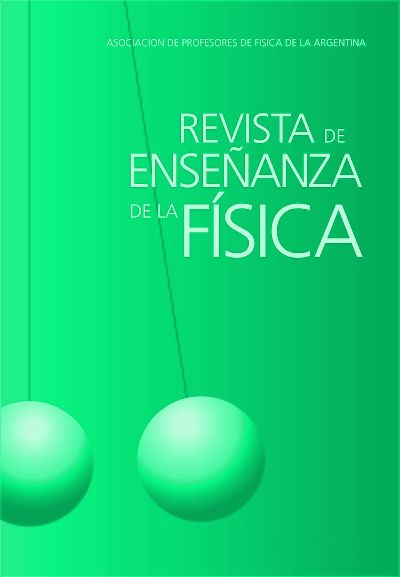Physicists and chemists facing the emerging atomic theory
DOI:
https://doi.org/10.55767/2451.6007.v35.n2.43734Keywords:
Atomic theory, Scientific communities, Boltzmann, MachAbstract
The modern atomic theory emerged in 1808 with the work of Dalton, and following subsequent refinements, it found widespread adoption among chemists for elucidating chemical reactions. By the mid-19th century, it was employed to comprehend the structural characteristics of organic molecules within the domain of chemistry. In contrast, within the realm of physics, the atomistic conception of matter was just beginning to take its initial steps, championed by figures such as Maxwell and the kinetic theory of gases. Progressing along this trajectory, Boltzmann engaged with prominent contemporaneous figures who exhibited reluctance toward acknowledging the existence of atoms. Ultimately, at the turn of the 20th century, a series of experiments, notably those conducted by Perrin on Brownian motion, conclusively persuaded physicists of the reality of atoms. Intriguingly, the community of chemists had anticipated physicists by half a century in embracing the atomic theory. This article discusses and analyzes this curious story.
References
Bernoulli, D. (1738). Hydrodinamica, sive de viribus et motibus fluidorum comentarii. Estrasburgo: Argentorati.
Bohr N. (1913). On the Constitution of Atoms and Molecules. Systems containing only a Single Nucleus. Philosophical Magazine, 26, 476-502.
Boltzmann, L. (1896). Vorlesungen über Gastheorie I Teil. Leipzig: Johann Ambrosius Barth.
Boltzmann, L. (1898). Vorlesungen über Gastheorie II Teil. Leipzig: Johann Ambrosius Barth.
Campanario J. M. (2016). Ventajas e inconvenientes de la historia de la ciencia como recurso en la enseñanza de la ciencias. Revista de Enseñanza de la Física, 11(1), 5-14.
Cercignani, C. (1998). Ludwig Boltzmann. The man who trusted atoms. Oxford: Oxford University Press.
Dalton, J. (1808). A new system of chemical philosophy. London: William Dawson & Sons Ltd.
Einstein, A. (1905). Über die von der molekular kinetischen Theorie der Wärme Geforderte Bewegung von in ruhen den Flüssigkeiten suspendierten Teilchen. Annalen der Physik, 17(8), 549-560.
Gibbs, J. W. (1902). Elementary Principles in Statistical Mechanics. New York: Dover.
Hoyningen-Huene, P. (2008). Thomas Kuhn and the Chemical Revolution. Foundations of Chemistry, 10, 101-115.
Kuhn, T. S. (1962). The Structure of Scientific Revolutions. Chicago: University of Chicago Press.
Mach, E. (1883). Die Mechanik in ihrer Entwicklung: Historisch-kritisch dargestellt. Leipzig: F.A. Brockhaus.
Maxwell, J. C. (1860a). Illustrations of the dynamical theory of gases. Part I. On the motions and collisions of perfectly elastic spheres. Philosophical Magazine, 4th series, 19, 19-32.
Maxwell, J. C. (1860b). Illustrations of the dynamical theory of gases. Part II. On the process of diffusion of two or more kinds of moving particles among one another. Philosophical Magazine, 4th series, 20, 21-37.
Menéndez V. (2016). Una nueva visión para enseñar física: los aportes históricos. Revista de Enseñanza de la Física, 28, 7-14.
Ostwald W. (1909). Grundriss der allgemeinen Chemie. Leipzig: W Engelmann.
Perrin, J. (1909). Mouvement brownien et réalité moléculaire. Annales de Chimie et de Physique, 18(5), 1-114.
Popper, K. (1934). The logic of scientific discovery. Londres: Routlege
Zerpa, H. S., Bugiolachio, N., Suvelza, G., Zerpa, y. & Martín, M. (2019). Pequeñas Historias. Una propuesta para la en-señanza y el aprendizaje de Historia y Epistemología de la Física. Revista de Enseñanza de la Física, 31, 757-766.
Published
How to Cite
Issue
Section
License

This work is licensed under a Creative Commons Attribution-NonCommercial-NoDerivatives 4.0 International License.
Aquellos autores/as que tengan publicaciones con esta revista, aceptan los términos siguientes:Los autores/as conservarán sus derechos de copiar y redistribuir el material, bajo los términos estipulados en la Licencia de reconocimiento, no comercial, sin obras derivadas de Creative Commons que permite a terceros compartir la obra bajo las siguientes condiciones:
- Reconocimiento — Debe reconocer adecuadamente la autoría, proporcionar un enlace a la licencia e indicar si se han realizado cambios. Puede hacerlo de cualquier manera razonable, pero no de una manera que sugiera que tiene el apoyo del licenciador o lo recibe por el uso que hace.
- NoComercial — No puede utilizar el material para una finalidad comercial.
- SinObraDerivada — Si remezcla, transforma o crea a partir del material, no puede difundir el material modificado.
- Los autores/as podrán adoptar otros acuerdos de licencia no exclusiva de distribución de la versión de la obra publicada (p. ej.: depositarla en un archivo telemático institucional o publicarla en un volumen monográfico) siempre que se indique la publicación inicial en esta revista.
- Se permite y recomienda a los autores/as difundir su obra a través de Internet (p. ej.: en archivos telemáticos institucionales o en su página web) antes y durante el proceso de envío, lo cual puede producir intercambios interesantes y aumentar las citas de la obra publicada. (Véase El efecto del acceso abierto).














